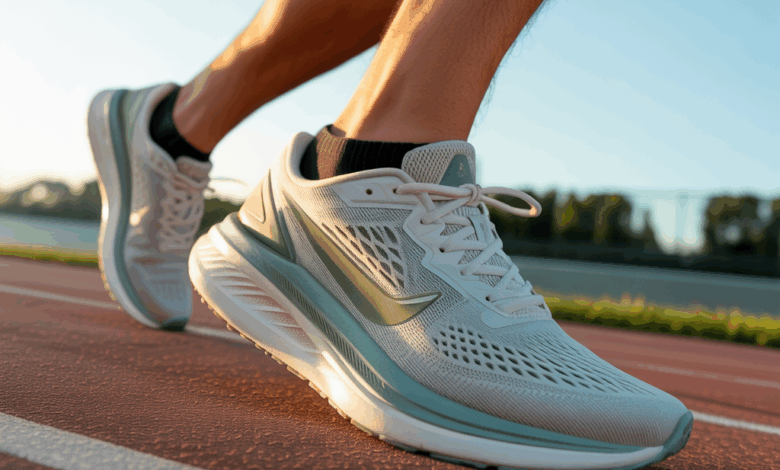What Is a Neutral Running Shoe? A Simple Guide for Comfort, Speed, and Injury Prevention

Ever lace up and feel like your shoes are either fighting your feet or doing nothing at all? Maybe your arches hurt after a few miles, or you notice excessive wear on the outside of the sole. If that sounds familiar, you might be asking: what is a neutral running shoe and is it right for my stride?
What is a neutral running shoe?
A neutral running shoe is designed for runners who have a neutral gait—meaning their feet neither roll excessively inward (overpronation) nor outward (supination) during the stride. Neutral shoes focus on cushioning, natural foot movement, and balanced support rather than structural correction. They offer responsive midsoles, flexible outsoles, and a consistent platform that lets your foot move freely.
Key features of neutral cushioned running shoes
- Even midsole thickness and no added medial posts or rigid stability elements.
- Responsive foam for a balance of comfort and energy return.
- Flexible heel-to-toe transition for natural gait mechanics.
- Light to moderate support suitable for training, tempo runs, and races.
Neutral vs. stability and motion-control shoes
Stability shoes include built-in features (like firmer foam on the inner side) to control overpronation. Motion-control shoes are stiffer and heavier for severe pronation. Neutral running shoes skip these corrective pieces and instead aim to provide balanced cushioning that complements a natural stride.
Who should wear a neutral running shoe?
Neutral trainers are ideal if you:
- Have a neutral gait (most common for recreational runners).
- Supinate slightly (feet roll outward) and need cushioned protection.
- Prefer a lightweight, flexible ride for speedwork or race day.
- Use orthotics that already provide correction and want a neutral platform beneath them.
Benefits of choosing a neutral running shoe
Opting for a neutral shoe can improve comfort and efficiency. Benefits include:
- Natural foot movement and improved proprioception during runs.
- Lightweight design that helps with quicker turnover and race performance.
- Versatility for different workouts—from easy runs to intervals.
- Less risk of creating muscle imbalances that can happen when using corrective shoes unnecessarily.
How to choose the right neutral running shoe: practical tips
Picking the right pair is more than brand loyalty. Try these steps before buying:
- Get a gait analysis at a specialty store or self-assess by checking wear patterns on old shoes—outside wear often points to a neutral or supinated gait.
- Try shoes at the end of the day when your feet are slightly swollen to ensure proper fit.
- Wear the socks you’ll use for running and test by jogging 5–10 minutes in the store or on a treadmill.
- Check heel-to-toe drop and cushioning level—runners transitioning from stability shoes may prefer a gradual change.
- Replace shoes every 300–500 miles depending on weight, terrain, and foam breakdown.
Fit checklist
- Thumb’s width of space at the toe box.
- Secure midfoot hold with minimal heel slip.
- Even pressure across the sole; no pinching or hotspots.
Workout variations and strength tips for neutral shoe runners
Neutral running shoes are versatile. Here are workout ideas and strength moves that pair well with them:
Weekly workout example
- Easy run: 3–5 miles at conversational pace (use your neutral shoes for comfort).
- Interval day: 400–800m repeats at tempo effort, neutral shoes help with quick transitions.
- Long run: 8–15+ miles at steady effort—prioritize cushioning and comfort.
- Recovery: Walks, cross-training, or easy spin sessions.
Strength and mobility
- Single-leg deadlifts and step-ups to build glute and hamstring stability.
- Calf raises and ankle mobility drills to support shock absorption.
- Core circuits (planks, bird-dogs) to maintain upright form during long runs.
Real-world examples: which runners benefit most
Case 1 — Recreational runner: Sarah runs 20–30 miles a week, has a neutral gait and prefers lightweight shoes for tempo days. A neutral cushioned running shoe gives her comfort without unnecessary support.
Case 2 — Speed-focused runner: David is training for a 10K and wants a race shoe with quick turnover. A neutral trainer with responsive foam reduces weight and boosts speed.
Case 3 — Cross-trainer using orthotics: Priya uses custom insoles for mild pronation correction. A neutral shoe provides a stable platform under the orthotic without double-correcting.
Frequently Asked Questions
1. Can a neutral running shoe help if I overpronate?
If you have mild overpronation, a neutral running shoe might work when paired with supportive strength training or orthotics. For moderate to severe overpronation, stability or motion-control shoes are usually a better match to reduce injury risk.
2. Are neutral shoes good for everyday training?
Yes. Neutral running shoes are versatile and often suitable for daily mileage, speed workouts, and even long runs. Make sure the level of cushioning matches your training volume and bodyweight.
3. How often should I replace my neutral running shoes?
Replace them every 300–500 miles. If you notice a change in cushioning, increased aches, or visible midsole compression, it’s time for a new pair.
Conclusion: Should you choose a neutral running shoe?
If your gait is balanced and you want a lightweight, flexible, and comfortable ride, a neutral running shoe can be an excellent choice. Remember: try before you buy, pair shoes with smart strength work, and rotate shoes if you mix training types. Ready to experiment? Test a neutral shoe on an easy 20–30 minute run, track comfort changes, and adjust from there.
Want more tailored training and gear advice? Check out our workout routines, explore fueling tips in our nutrition guides, or improve recovery with proven ideas on our wellness tips page.
Take action: Next time you shop, ask for a gait analysis, try a neutral running shoe for a short test run, and plan two weeks of training to see how your body responds. Your feet (and your times) will thank you.





